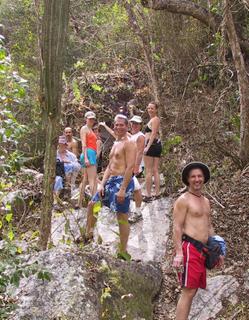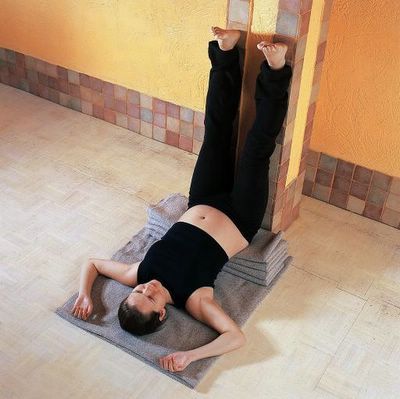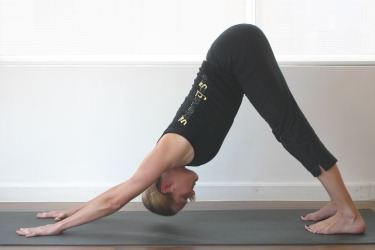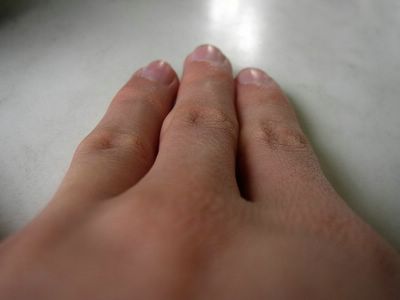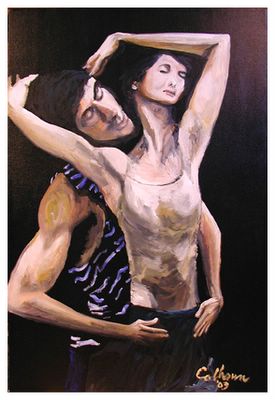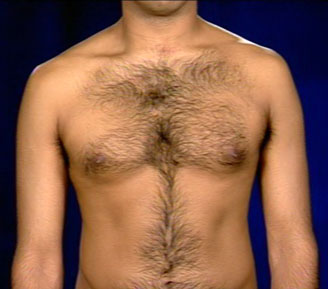I was 8 years old. My dad woke me & my brother up in what seemed like the middle of the night. There, in black and white, we saw what probably millions of others saw that night. Neil Armstrong stepped down from the ladder on the Lunar Module and put his foot in the dust on the surface of the moon. It was barely believable.
That was 36 years ago today. The event itself is probably only a bit more famous now than the words Armstrong uttered, "One small step for man, one giant leap for mankind."

Fast forward.
In 1991, I was standing in the narrow hallway between several cubicles at my job in downtown Washington, DC. I had just begun studying yoga and I wanted to show my friends at work a pose I'd done for the first time the night before.
In shoes and business clothes, I leaned down and put my right hand on the floor. Then I scooted my left foot in close to my right. When I had all my weight in my right leg, I lifted my left leg up until it was stretched out, horizontal. Then I turned my chest toward the ceiling and extended my arms in both directions.
I stood there in half moon pose (
ardha chandrasana) surprising myself and my co-workers that I could balance on one leg and be so wide open at the same time. I stayed there. As if I were being held up by something I didn't know about, and still don't.
It was probably the first time I taught someone else something about yoga. I've been moonstruck ever since.

It was exhilirating. Really, it was much more fun than watching Armstrong's walk on the lunar surface.
Probably because I was
doing it, not watching it.
Just like President Kennedy inspired our whole country to put a man on the moon, I've been inspired by my teachers in the yoga rooms to take small steps and giant leaps beyond what I thought was possible.
I may be wrong about this, but the longer I teach yoga, the more frequently I believe I meet people who would rather watch while others do
ardha chandrasana than do it themselves. It seems as if more of us are becoming watchers, not doers.
We leave the challenging stuff to the experts, the glitterati.
While I'm glad my dad hauled me out of bed to see Armstrong on the moon, the truth is, I didn't see Armstrong on the moon. I saw Armstrong on TV. Had I gone outside and looked up that night I would have seen
ardha chandra, the half moon. I'd have experienced it directly.
If you want to know whether the moon is full tonight, don't wait for the graphic on the nightly weather forecast. Go out on your back porch. Look up. See for yourself.
If you want to find out what's so exhilirating about
ardha chandrasana, don't just read about it. Get up. Experience it. Experience
yoga!By the way, you might fall.
Kevin Perry
www.ExperienceYoga.orgp.s., People fall out of
ardha chandrasana all the time. But many choose to come out. Most of those who choose to come out sooner than they want to do it because they get a painful cramp in the hip of the bottom leg. Next time you get a cramp in your hip, look down. I'll bet your foot is turned in, rather than pointing out to the side. Keep your foot turned out and be sure your knee points in the same direction as your foot and you'll see that hip cramps go away. Donna Farhi does a beautiful job of describing this pesky problem and how to resolve it in her book
Yoga Mind Body & Spirit, p. 111.
p.p.s., You may try half moon pose and fall. Some astronauts have tried to go to the moon and failed. You will probably try and fail at love, too.
Even if it's messy, you should still try. I love this speech by Ronny Cammareri from the movie
Moonstruck. He says, "Loretta, I love you. Not like they told you love is, and I didn't know this either, but love don't make things nice - it ruins everything. It breaks your heart. It makes things a mess. We aren't here to make things perfect. The snowflakes are perfect. The stars are perfect. Not us. Not us! We are here to ruin ourselves and to break our hearts and love the wrong people and die. The storybooks are bullsh**. Now I want you to come upstairs with me and get in my bed!"
p.p.p.s., You can see some really cool pictures of the surface of the moon here:
http://moon.google.com/.
p.p.p.p.s., Speaking of Armstrong.... I'm rooting for Lance Armstrong to boldly go where no man has ever gone before! Go Lance!
Copyright 2005. All rights reserved, Mo Yoga LLC.
